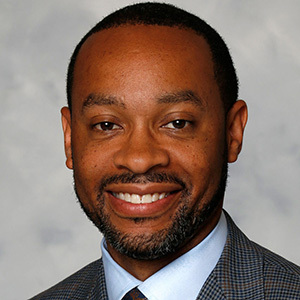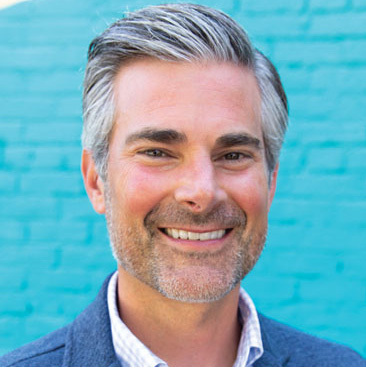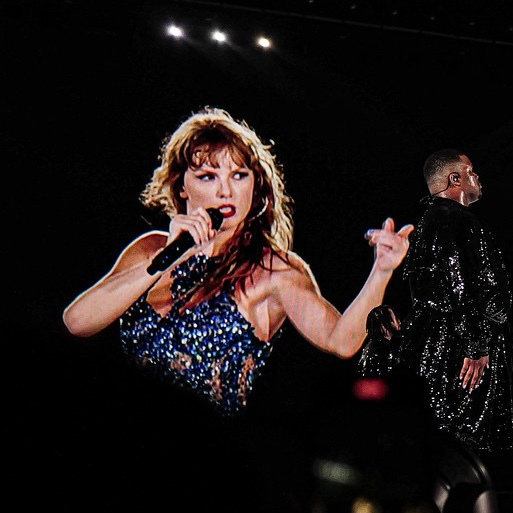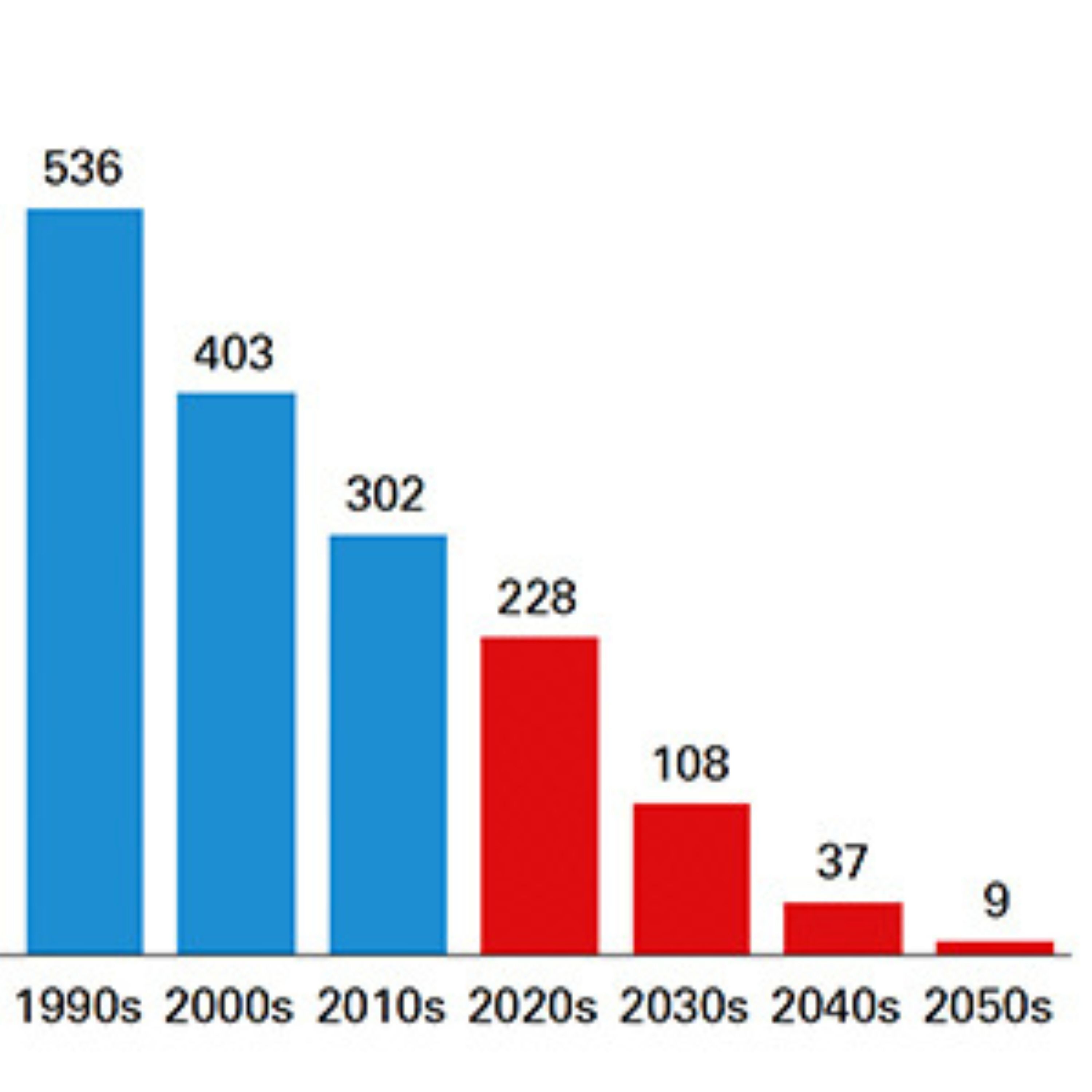Discover The IBJ Podcast
The IBJ Podcast

271 Episodes
Reverse
Windsor Jewelry has operated within a stone’s throw of Monument Circle since the year 1919. Some of its client relationships go back five generations. It has been owned by only three people: its founder, Sig Asher; then Asher’s son-in-law, Herman Logan; and then Greg Bires, an employee who bought the business from Logan in 1998. It has survived the Great Depression, the economic hardships of World War II, the Great Recession and, most recently, the one-two punch of the pandemic and rioters who broke into the store twice in mid-2020.
Last week, Windsor’s dedicated customers and passersby on Meridian Street learned that everything must go. Bires has decided to retire and is selling the store’s inventory at deep discounts with plans to close up shop early next year. Business has been good, he says. In fact, he’s been making inroads with a new generation of customers. And it’s possible the Windsor Jewelry name might live on, if Bires could be persuaded by some prospective buyer to sell the store’s intellectual property. But it appears that Windsor Jewelry as we know it will end its run at about 105 years old and just after Bires hits his 70th birthday in December.
Bires is our guest this week for a wide-ranging conversation about how he came to the decision to retire after about 55 years in the jewelry business—a career that started in his early teens. He also explains how the shop was able to persevere through the pandemic era and then take advantage of the way downtown is morphing into more of a residential center.
The IBJ Podcast is brought to you by Taft.
Donald Trump is headed for a second term in the White House. The pundits have had ample opportunity to dissect the political implications of his victory. For this week’s podcast, we wanted to explore the potential financial repercussions of a new Trump administration.
There’s no mystery about his fondness toward tariffs—the taxes applied by the government for imported or exported goods as a way to influence foreign trade. Trump has enthusiastically proposed a 10% to 20% tax on most foreign products, and a 60% tariff on goods from China. On the American front, he wants to lower corporate taxes and extend the tax cuts from the 2017 Tax Cuts and Jobs Act that are set to expire soon. His administration is widely expected to loosen corporate regulations and otherwise defang watchdog agencies. He is seen as devoted friend of the financial, defense and crypto sectors. Wall Street was thrilled with his election victory: The stock market almost literally jumped for joy on Nov. 6, posting some of the biggest gains seen in many months.
Trump’s policies will affect street-level consumers and investors in direct and indirect ways—some intentional and perhaps some unintentional. IBJ financial columnist Peter Dunn, aka Pete the Planner, is our guest this week to help us make sense of what could be in store for us, the stock market, the federal debt, the economy and inflation over the next four years. The tariffs in particular could be problematic for some American industries, including the automobile sector, and could have the effect of boosting inflation. Pete also suspects that the pharmaceutical industry could have a tough time, which might affect Indianapolis-based Eli Lilly and Co.
The IBJ Podcast is brought to you by Taft.
One way you can gauge the health of a city is the number of cranes on its skyline. One of the biggest contributors of cranes over downtown in the last two years has been the $4.3 billion IU Health hospital campus under construction just south of Methodist Hospital. It’s a generational development for that side of downtown, but IU Health officials want to make sure it doesn’t overshadow the many needs of historic neighborhoods to the north and to the west.
For several years the hospital system has been planning an initiative and nonprofit organization known as Indy Health District. It focuses on five neighborhoods with a total of about 9,000 residents who, due to a number of socioeconomic factors, have a much lower life expectancy than folks who live in other parts of the Indy metropolitan area. The district’s leaders want to find solutions for most, if not all, of the issues weighing on these neighbors, including housing, transportation, land use, safety and food deserts.
It’s an incredibly ambitious undertaking that’s a bit difficult to wrap your brain around. It also prompts a healthy amount of skepticism. So we’ve invited Jamal Smith to lay out the plans for us. He’s executive director of Indy Health District and executive director of government affairs and strategic partnerships for IU Health. And he grew up with some of the impediments to success and good health that the residents of the district face.
The IBJ Podcast is brought to you by Taft.
Last week’s edition of the IBJ Podcast featured Chris Gahl, executive vice president and chief marketing officer for Visit Indy, unpacking the strategy for promoting Indianapolis to a worldwide audience during Taylor Swift’s Eras Tour. As promised, we have a follow-up interview with Gahl this week that is so different from last week’s that we needed to carve out a separate space for it.
Gahl is one of the most recognizable figures among those who promote Indianapolis—and one of the most important voices for the city’s brand of Midwestern hospitality and inclusive values. He’s known for his sunny disposition and easy way for expressing enthusiasm for almost any topic. But his adult life was shaped by childhood tragedy—the murder of his father.
Thomas E. Gahl, a U.S. probation officer for the Southern District of Indiana, was killed in 1986 by a parolee in Fountain Square. It of course was a catastrophic event for Gahl, his mother and his younger brother, Nick. Even today, he’s sorting through the repercussions of the loss of his father.
The tragedy reverberated in a different way in 2018 when Gahl was diagnosed with cancer. A father of two boys himself, Chris couldn’t help but see the potential for his sons to suffer a similar loss. Under the care of a legend in the Indianapolis medical community, he got a clean bill of health last year. And he generously agreed to talk about the lessons from his cancer journey and his father’s death for this week’s edition of the podcast.
The IBJ Podcast is brought to you by Taft.
Does anyone need reminding that Indianapolis is less than two weeks away from hosting Taylor Swift and the last U.S. dates for the Eras Tour? There of course are three shows scheduled Nov. 1, 2 and 3 in Lucas Oil Stadium, and more than 50 related events planned across the city to entertain fans over what essentially will be a major holiday downtown.
About 200,000 people are expected to come downtown that weekend to either attend or simply celebrate the concerts. About 195,000 tickets have been sold, and about 80% of the ticket holders will come from outside Indiana. This is an immense marketing opportunity for Visit Indy, the agency in charge of promoting Indianapolis for conventions, entertainment and other tourism. Not only will the eyes of the world be trained on Indianapolis for an entire weekend, giving Visit Indy an unbeatable hook for hyping the city in its best light, but it will have days to make a lasting impression on tens of thousands of people just getting to know the city. The Eras Tour also will bring an untold number of corporate leaders and celebrities to the city, each with the potential to make a measurable impact on Indianapolis.
In this week’s episode of the IBJ Podcast, host Mason King talks strategy with Chris Gahl, executive vice president and chief marketing officer for Visit Indy. He explains how Visit Indy plans to leverage this nearly unprecedented opportunity with a campaign that incorporates social media, geofencing, Indianapolis International Airport, hotel managers, an army of volunteers, curated tours for corporate and celebrity VIPs, the Visit Indy suite at Lucas Oil Stadium and even outreach to Lyft and Uber drivers.
Photo by Paolo Villanueva (@itspaolopv) via Flickr
The IBJ Podcast is brought to you by Taft.
The LEAP Research and Innovation District under development near Lebanon represents a shift in the way economic development officials are working to attract companies to Indiana and create jobs. Its detractors have objected to the strategy by the Indiana Economic Development Corp. to corner thousands of acres of rural land for the project. Some are highly skeptical about the impact of channeling tens of millions of gallons of water per day to the site for its tenants. You could argue that the thing giving LEAP the most sizzle and credibility right now is its future anchor tenant: Indianapolis-based pharmaceutical giant Eli Lilly and Co.
In total, Lilly has committed to investing more than $13 billion in its facilities and activities at the district. It has revealed its plans over four announcements in the last two and a half years, with the most recent coming earlier this month: a $4.5 billion project called the Lilly Medicine Foundry. Where the previous investments were all about manufacturing, this latest announcement is more about research. The so-called foundry will focus on how to make new medicines better and faster, while also increasing capacity for clinical trial medicines. Other potential payoffs for Hoosiers include creating an anticipated 400 full-time jobs for highly skilled workers, who will include engineers, scientists and operations personnel.
In this week’s edition of the IBJ Podcast, reporter John Russell puts it all in context and explores in greater depth the potential impact of the foundry as Lilly hovers near a milestone that would make it one of the most valuable companies in America.
The IBJ Podcast is brought to you by Taft.
Sonja and Alex Overhiser are among the most influential chefs in Indiana, but you won’t find them working in any restaurant. From the kitchen in their home south of Broad Ripple, they have created, tested and posted more than 3,000 recipes to their 14-year-old food-influencer website, acouplecooks.com. It logs millions of pageviews per month, while the Overhisers also maintain a social media following that includes about 107,000 subscribers on Instagram and 96,000 followers on Pinterest.
For the last several years, they also have been working on a glossy cookbook for publisher Chronicle Books that leverages the punny hook in their brand: A Couple Cooks. They’re not just two relatives: Sonja and Alex are married, and the cookbook addresses the joys and challenges of people who work together to make the same dishes. Titled “A Couple Cooks: 100 Recipes to Cook Together,” it also includes step-by-step instructions for sharing the workload for each dish. It will be available online and on bookstore shelves on Oct. 15.
The “cook together” angle helped the Overhisers land their book deal with Chronicle, which has given the $40 final product a hard-cover heft and high-end sheen suitable for a holiday or newlywed gift. As the guests for this week’s IBJ Podcast, the Overhisers pull the curtain back on the process for finding a literary agent and getting a deal with a publisher, as well as the process for marketing a cookbook. They also take us back to the early days of establishing acouplecooks.com. They worked for seven years to develop a fan base and learn the ins-and-outs of internet creator commerce before quitting their day jobs and going all-in on their food-blogger platform.
Readers of IBJ’s annual lists of fastest-growing Indianapolis-area companies might be familiar with GroundBreakers, formerly known as GroundBreakers Hydrovac Excavation. Between 2021 and 2023, its annual revenue grew 143.1% to $18.9 million, which was good for 10th place on our most recent list. All of that growth came under President Andrea Sloan, who was recruited in 2018 to become the chief executive and buy the firm. She acquired it in chunks and became the outright owner in 2021.
So who is Andrea Sloan? Is she one of those management ringers that private equity firms hire to take over companies? Nope. Did she have a resume full of experience in the construction and utility services fields? No. Did she have an MBA? No. Andrea Sloan’s rise is a testament to many of the less traditional paths to business leadership we’ve discussed over the years on the podcast, as well as some of the less measurable philosophies of career management. Sloan is a veteran of the U.S. Army Reserves, an entrepreneur and a jack of all trades with significant experience in a wide variety of fields. She also is a proponent of the “fake it til you make it” philosophy, enthusiastic networking, creating a supportive culture and always saying “yes” to opportunities.
As our guest on this week’s episode of the IBJ Podcast, Sloan discusses growing up on the east side of Indianapolis and attending Scecina Memorial High School. She shares what she learned from the reserves, co-founding a company and taking a side trip into state government. She extols the virtues of taking chances, finding mentors and hiring other veterans. And she recalls what she calls her “Pretty Woman” moment, when the banks that declined to loan Groundbreakers money started seeking out her business.
The IBJ Podcast is brought to you by Taft.
The Indiana Fever's 2024 season has been transformational for the team on the court, in the box office and in the revenue column, in particular with the advent of two major difference-makers. One, of course, is all-star rookie Caitlin Clark, and the other is the rapidly advancing technology that the sales and marketing teams use to entertain—and retain—ticket holders from the Fever’s sold-out games in Gainbridge Fieldhouse.
Todd Taylor, president of business operations for Pacers Sports & Entertainment, joins the IBJ Podcast this week to detail how the Pacers and Fever are using artificial intelligence and customer data to make potent connections with fans, as well as how the teams expect to be able to use those elements in the future. They can gather data to build customer profiles about attendees and what they enjoy about the experience; customize the communication they receive and when they receive it; and provide personalized offers. In the future, the teams hope to be able recognize where fans are in the fieldhouse at any given time and interact with them digitally. Taylor also explains how PS&E adjusted to the explosion in demand for tickets, how his staff calibrates ticket pricing for a vastly expanded array of options, and how its content creators are feeding the marketing beast.
At the beginning of the conversation, Taylor takes us back to early 2024 as the sales and marketing teams began preparing for the very likely possibility that the Fever would draft Clark. It wasn’t a foregone conclusion, however, and the department needed to consider other scenarios. Of course, ticket demand eventually skyrocketed, leading to three straight weeks of fielding requests for ticket packages. Staffers must remain flexible as the playoffs progress. For example, they won’t know whether there will even be a first-round game in Indy until Wednesday night.
The IBJ Podcast is brought to you by Taft.
Now in its 23rd year, the Orr Fellowship program has helped develop an astounding number of leaders in Indiana’s tech and entrepreneurial ecosystems. It now counts 624 alumni who have worked at—and in some cases founded—nearly 300 significant companies and organizations.
The program was established in 2001 to help develop the early careers of promising college graduates, in part by matching them with high-growth Indiana companies for two-year stays. In addition to employment, the fellowship offers vast networking opportunities, workshops, pitch competitions and stipends to learn new skills. The hope is that Orr Fellows will decide to stay in-state and form the foundation for new generations of leadership. Indeed, 84% of fellows remain in-state immediately after the program. If you take into account all of the alumni over 23 years, about 60% are still Hoosiers.
We can get a robust sense of the big picture by narrowing the focus to an Indianapolis-based startup named Malomo. It was co-founded by serial entrepreneur Yaw Aning, who was a member of Orr Fellowship’s Class of 2007. Malomo’s head of strategy and operations is Alicia Gaba, a member of the Fellowship’s Class of 2008 and who joined Malomo in 2021. Mariah Parsons, who currently is Malomo’s head of marketing, joined the firm as a fellow in 2021 and was promoted to the leadership team soon after the fellowship ended.
All three are guests on this week’s podcast to talk about their experiences as fellows and a concept we call horizontal networking. In this case, it’s how Orr Fellows lean on their peers for mentoring, career support, job opportunities and even capital as they help grow central Indiana’s entrepreneurial ecosystem. We also take a side trip to talk about Indiana brain drain and whether that concern is less relevant in the age of remote work.
On Sept. 18, we will learn whether or not the Federal Reserve will lower its federal funds interest rate for the first time in four years. It could be one of the biggest financial events of the year, leading to lower interest rates for lending and quite possibly a big bump in spending in the U.S. economy. In this episode of the podcast, our concern lies in its effect on the interest rates banks pay consumers for parking their money in savings. That interest rate also would go down.
For the podcast, we’re defining savings as money you want to be able to get your hands on fairly quickly without disrupting your long-term investment strategy. But it’s not necessarily the money you keep in your checking account either. It’s relatively liquid—some people still call it “cash”. But you want to be able to watch it grow—at least a little bit. There are lots of options for savers, such as passbook savings accounts, high-yield-savings accounts, certificates of deposit and money market accounts. And you almost certainly know someone who wants to punt their savings to tangible assets like gold. Each option has advantages and drawbacks, depending on how quickly you want to access your money, how much interest you can get and the amount of exposure to risk. IBJ Podcast host Mason King always has been a money-under-the-mattress kind of guy, but he realizes now that this is tantamount to hiding your head in the sand while the dessert cart rolls by. This week, IBJ columnist Pete the Planner fills us in on the Fed’s impending interest rate decision and the best places to stash your cash.
The IBJ Podcast is brought to you by Taft.
We are in the era of peak entertainment. Through our phones, computers and televisions, we have access to nearly every movie, album, TV show, book and video game ever created. You'd think many of us would decide it isn’t necessary to leave our homes. In the Indianapolis area, that apparently is not the case. IBJ just published its 2024-25 arts and entertainment calendar, and the number of music, dance, comedy, literary, film and theatrical events—not to mention art fairs and exhibits— to choose from is astonishing for an area that two generations ago was known as “India-no-place.”
IBJ arts reporter Dave Lindquist has curated a list of 125 artistically significant and culturally relevant offerings that our readers can trust will be worth their time. Looking at this list, we can learn a lot about how the arts and entertainment ecosystem in central Indiana has changed. Right off the bat, you’ll see that the 125 picks represent 60 venues, many of which only recently debuted as suburban communities engage in an arts amenities arms race. Not only is Indianapolis now a regular stop for Broadway performers like Leslie Odom Jr., it’s also a place that’s developing work for Broadway. Movies and musicians just beginning to sniff international recognition come to Indianapolis to help gain momentum. And then there’s the generation-defining cultural phenomenon, Taylor Swift, who has chosen Indianapolis for the climax of the Eras Tour in America. For this week’s IBJ Podcast, Dave has culled 10 events from his list for deeper discussion, and host Mason King adds a few more. And then they start examining the potential impact and import of “Swiftianapolis,” coming in early November.
The IBJ Podcast is brought to you by Taft.
Indiana University demographers released projections last week that show the state's population growth cratering until it hits near-zero growth by the 2050s. In fact, more than two-thirds of Indiana’s 92 counties will see losses in population over the next 30 years, according to the estimates from the Indiana Business Research Center at the Indiana University Kelley School of Business. This can be explained by a grim but relatively simple phenomenon: The number of deaths in the state will begin surpassing the number of births in the 2040s. At that point, migration from other areas will account for all of Indiana’s population growth. Meager population growth would have serious repercussions for our labor force and economy, putting pressure on officials across the state to make Indiana as appealing a place to live as possible.
The counties with large cities will be the exceptions. The 11-county Indianapolis metro area is expected to add residents at a relatively robust clip over several decades. In fact, the metro area is projected to hit about 2,497,000 residents by 2050—an increase of nearly 405,000 from 2020. And the state’s five fastest-growing counties will be suburban Indianapolis counties. The question now is, “What should public officials on the city, county and state level do with this information?” Matt Kinghorn, the principal researcher on the IBRC study, is our guest this week to break down the numbers, explain what’s behind these expected trends, dig into the challenges facing the state and provide a preview for a tale of two different Indianas.
The IBJ Podcast is brought to you by Taft.
You easily could argue that the biggest business newsmaker of the year so far in Indianapolis is the Indiana Fever. It started with drafting Caitlin Clark in April, leading to an explosion of interest in women’s professional basketball with sold-out stadiums and best-ever TV ratings for the spor—and now the news that the Fever will host the 2025 WNBA All-Star Game. Olivia West has had a front row seat for the Fever phenomenon (not that she ever sits down) as one of the in-arena emcees for Fever games—one of the folks who hype up the crowd, host games for fans during breaks in play and feature Fever sponsors. This is her second season in the role after essentially talking the Fever into giving her the job. Pacers Sports & Entertainment, which owns the Fever, then was quick to give her the same role for Indiana Pacers games last season. What’s even more impressive is that her work for the Pacers and Fever is a side gig. Her full-time day job is with Eli Lilly and Co. as a DEI program consultant.
Olivia West is a classic up-and-comer, having cut her teeth as an entrepreneur as a 4-H member in La Porte Indiana before attending Purdue University for agricultural economics and then branching into marketing. She’s a big proponent of finding and leveraging your particular gifts, which for her means excelling in personal communication, networking and refusing to accept “no” as an answer. She is among the young leaders IBJ chose for its “20 In Their Twenties” Class of 2024 last week, and she’s our guest this week on the IBJ Podcast in a happy coincidence, given the news about the WNBA All-Star Game. Her mindset of opportunity meeting persistence is perhaps best captured in her story of how she became an emcee for the Fever. She also shares the many practical lessons she learned showing and selling pigs in La Porte, as well as playing basketball. And she discusses the evolution of the Fever this season and the importance of believing in your own greatness.
The IBJ Podcast is brought to you by Taft.
One easily could argue that the most significant real estate development in central Indiana from the last 15 years was the JW Marriott Indianapolis, which opened in February 2011. With more than 1,000 rooms over 34 glass-encased floors, it instantly became the tallest and largest hotel in central Indiana. It also played an outsized role in the city’s strategy to attract more convention and event business. You’ll recall that Lucas Oil Stadium was completed in 2008. The new Indianapolis International Airport terminal debuted in 2008. Also in 2008, the Indiana Convention Center started a major expansion, which was completed in 2011. With the JW Marriott added to the mix, the city could go a long way to realizing its ambitions of hosting a larger variety of meetings and prominent events. It remains the Big Kahuna of downtown hotels while also serving as the city’s largest billboard—a canvas for hundred-foot graphics commemorating special events.
Phil Ray has been general manager of the JW Marriott for the last decade and had leadership roles in other major local hotels going back to 2003. He has a 34-story perspective on how the city’s status as a convention and tourism destination has evolved, as well as the latest efforts to attract more convention business. Ray and IBJ Podcast host Mason King have a wide-ranging discussion this week on topics such as the new taxing district the city is considering for beautification and public safety efforts downtown, and the city-funded construction of an 800-room hotel that would become the JW Marriott’s biggest competitor. They also discuss how the JW Marriott weathered the first year of pandemic and then became a key player in the audacious effort in 2021 to host all of March Madness in the Indianapolis area.
The footprint of the Indiana Pacers on the southeast side of downtown Indianapolis would roughly correspond with a size 6,329 athletic shoe. Gainbridge Fieldhouse actually is owned by the Marion County’s Capital Improvement Board, which owns most of downtown’s major sports and convention facilities. But there’s no doubt that its primary occupants are the Indiana Pacers and Indiana Fever, both owned to a large degree by real estate developer Herb Simon and his family. (FYI: Billionaire businessman Steve Rales has a minority stake in the Pacers.) But in recent years, the Simon family’s real estate holdings near and immediately adjacent to the fieldhouse have grown by leaps and bounds.
We’re beginning to see the outlines of a critical mass of hospitality and entertainment properties controlled by the Simons that could balloon to even greater size if the Simons are involved—as they are widely believed to be—in plans to bring a Major League Soccer team to Indianapolis. It would play in an arena to be built just a couple of blocks east of Gainbridge Fieldhouse, and almost certainly would use a large parcel of land recently purchased by the Simons.
IBJ reporter Mickey Shuey has been on top of these developments for several years and is the man who can help connect the dots. In his latest reporting, he has details on plans from the Simons to create a $300 million luxury hotel and concert venue complex directly across Pennsylvania Street from the fieldhouse. Shuey joins us for this week’s edition of the IBJ Podcast to take stock of the Simons’ current and planned investments and how they could form a cohesive entertainment and hospitality ecosystem on downtown’s southeast side.
The IBJ Podcast is brought to you by Taft.
The debut of the Speedway eatery Borage in June was one of the hottest local restaurant launches in recent memory, covered by most of the major media outlets in the Indianapolis market—including IBJ. Its co-creators—Josh Kline and Zoe Taylor—had won considerable acclaim as chefs for nationally lauded Milktooth in Fletcher Place. The concept for Borage was unique, combining a restaurant, a bakery and a market in one L-shaped building. And Taylor and Kline wanted to make a point of providing fair compensation for employees, guaranteeing at least $20 an hour.
IBJ’s Dave Lindquist outlined their plans—and the investment from a local real estate developer that made the project possible—in a story that ran on June 7. This edition of the IBJ Podcast follows up on how the business is shaking out after the June 12 grand opening. Zoe Taylor brings us up to date on what she and Kline have learned in the last six weeks about what’s working and what has needed tweaking.
As Taylor readily admits, running the financial side of a restaurant doesn’t come easy to them, so perhaps their biggest challenge has been learning how to budget and make the business sustainable. Borage hasn’t been profitable right out of the gate, and Taylor and Kline realize the timeline for profitability for a small independent restaurant typically stretches many months. For the time being, they're opting not to take salaries.
The IBJ Podcast is brought to you by Taft.
The Federal Reserve has indicated interest rate cuts are coming after policy makers spent the past two years using higher rates to try to tamp down inflation. IBJ personal finance columnist Peter Dunn, known to many readers as Pete the Planner, talks in this week's podcast about how reduced rates will stoke the economy as businesses and consumers start spending and investing.
Dunn explains why "people make really dumb decisions" when interest rates fall and consumer confidence rises. And he explains what might be a better option.
Dunn also references his "power percentage" calculation, which he has written about in the past. You can read a column about the power percentage here.
The IBJ Podcast is brought to you by Taft.
More than 50,000 Catholics from across the United States are set to arrive in Indianapolis this week for the church’s first national gathering in more than 80 years, marking one of the most significant religious events the city has ever hosted. The National Eucharistic Congress, scheduled for Wednesday through Sunday at the Indiana Convention Center and Lucas Oil Stadium, will feature church services, speakers, presentations, religious sacraments, exhibitions, concerts and live podcasts. As mainstream religions continue to lose followers, this event will be laser-focused on one of Christianity’s foundational sacraments—the Eucharist, otherwise known as Holy Communion or the Lord’s Supper. It also will stage one of the most conspicuous outdoor public gatherings in Indianapolis’ recent history, outside of the Speedway: a mile-long procession through downtown that could be attended by as many as 50,000 people.
Our guest this week is Ken Ogorek of the Archdiocese of Indianapolis, who discusses the revival and purpose of the Eucharistic Congress after an 83-year absence. We also hit on the ways this event is different from many of the religion conferences and annual meetings that Indianapolis hosts and how local organizers are providing accommodations for participants with a variety of needs. And we delve into how church leaders will evaluate the impact of the congress once the attendees are gone.
Our guest this week is Ben Rose, a longtime creative force in the Indianapolis arts community who recently was named the inaugural artistic director of the fledgling Indianapolis Black Theatre Co. If you want to think about it as a startup, the theater has a long runway thanks to a campaign that raised $1.5 million dollars. Part of Rose’s job as artistic director will be to establish revenue streams that can maintain momentum once that first round of funding runs out
Rose has several outside-the-box ideas for supporting the company while serving the careers of company members both on and off stage. They’re influenced in part by a varied career that took him to Atlanta and Los Angeles for significant periods of time, as well as his professional experience in several artistic modes, including stage acting, writing, videography, filmmaking and photography. And he has learned to see the world through several lenses due to his unusual upbringing as a mixed-race child from Indianapolis who was adopted by a white family at a very early age and grew up in relatively rural Tipton.
In this week’s episode of the podcast, Rose discusses how he forged a career in the arts through what he calls fortunate, back-door opportunities and developed his vision for how Indianapolis Black Theatre Company can sustain itself while helping its members find work in other venues. He also delves into the group’s first official production which has something to say about taking professional risks in places where you might not have felt welcome in the past. It’s a staged reading of a play about a groundbreaking black woman who became the first professional female baseball player as a member of the Indianapolis Clowns in the previously all-male Negro Leagues.
The IBJ Podcast is brought to you by Taft.
Comments
Top Podcasts
The Best New Comedy Podcast Right Now – June 2024The Best News Podcast Right Now – June 2024The Best New Business Podcast Right Now – June 2024The Best New Sports Podcast Right Now – June 2024The Best New True Crime Podcast Right Now – June 2024The Best New Joe Rogan Experience Podcast Right Now – June 20The Best New Dan Bongino Show Podcast Right Now – June 20The Best New Mark Levin Podcast – June 2024
 United States
United States





















